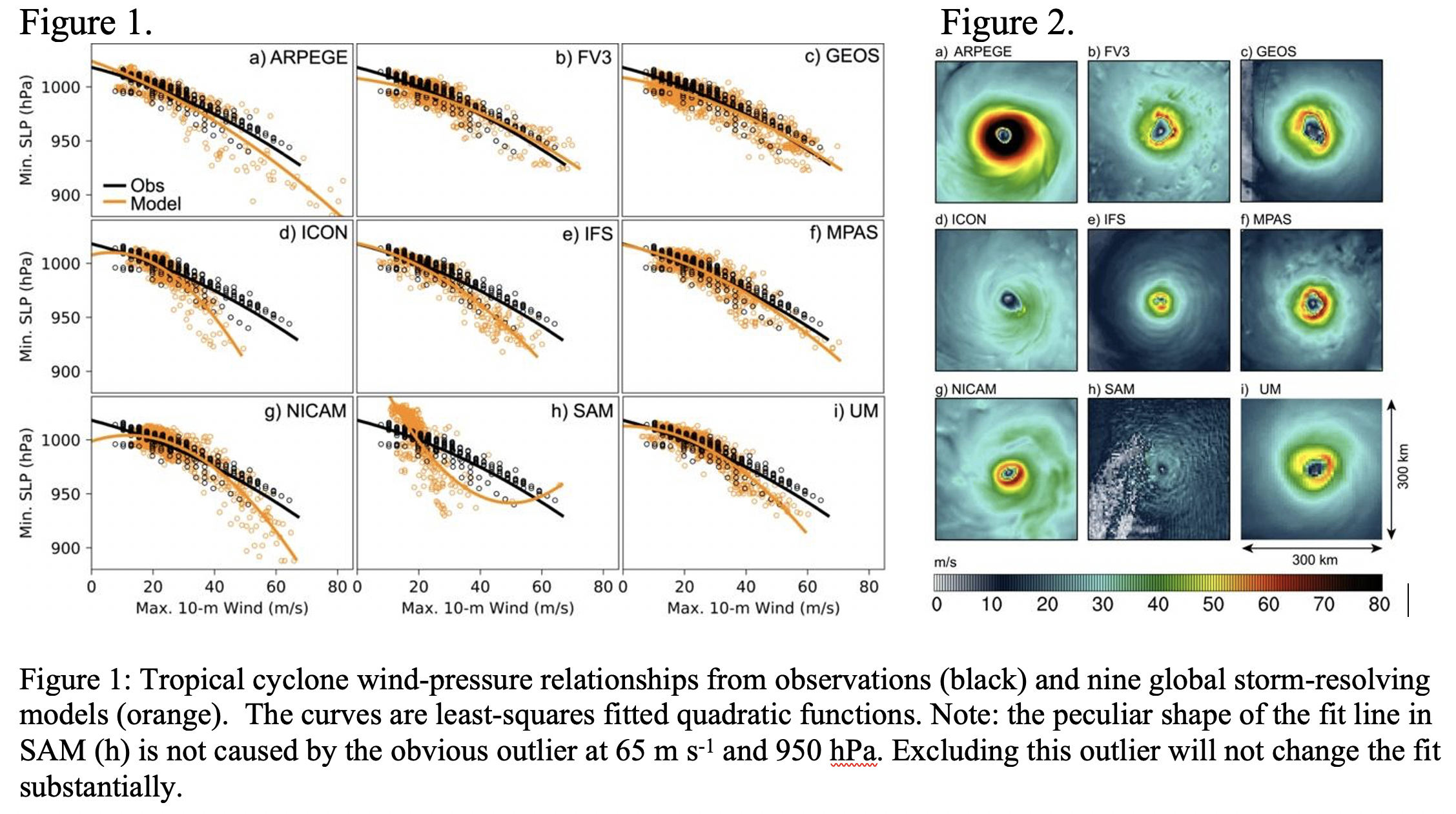Graphical Abstract
Judt, F., D. Klocke, R. Rios-Berrios, B. Vanniere, F. Ziemen, L. Auger, J. Biercamp, C. Bretherton, X. Chen, P. Düben, C. Hohenegger, M. Khairoutdinov, C. Kodama, L. Kornblueh, S.-J. Lin, M. Nakano, P. Neumann, W. Putman, N. Röber, M. Roberts, M. Satoh, R. Shibuya, B. Stevens, P. L. Vidale, N. Wedi, and L. Zhou, 2021: Tropical cyclones in global storm-resolving models. J. Meteor. Soc. Japan, 99, 579-602.
Special Edition on DYAMOND: The DYnamics of the Atmospheric general circulation Modeled On Non-hydrostatic Domains
https://doi.org/10.2151/jmsj.2021-029
Graphical Abstract
NEW GA
Plain Language Summary:
Typhoons and hurricanes (collectively known as tropical cyclones) are one of the most destructive natural phenomena, and their prediction is an important task of weather and climate models. In this study, we evaluated nine global storm-resolving models, that is, models with high enough resolution to explicitly simulate the thunderstorms that make up the cyclone power engine, in their ability to simulate tropical cyclones. We found that the models are able to simulate cyclones more realistically than previous generations of global models. For example, unlike current-generation global models, the tested models are able to capture the cyclone eyewall and its extreme winds. But the models are not perfect, and continued work in improving the models is needed to exploit their full potential in tropical cyclone prediction.
Highlights:
- Global storm-resolving models produce realistic tropical cyclones and remove long standing issues known from global models such as the deficiency to accurately simulate tropical cyclone intensity.
- Tropical cyclones are strongly affected by model formulation, and all models suffer from unique biases regarding the number of cyclones, intensity, size, and structure.
- Some of the nine models investigated here simulated tropical cyclones better than others, but no single model was the “best” in every way.







